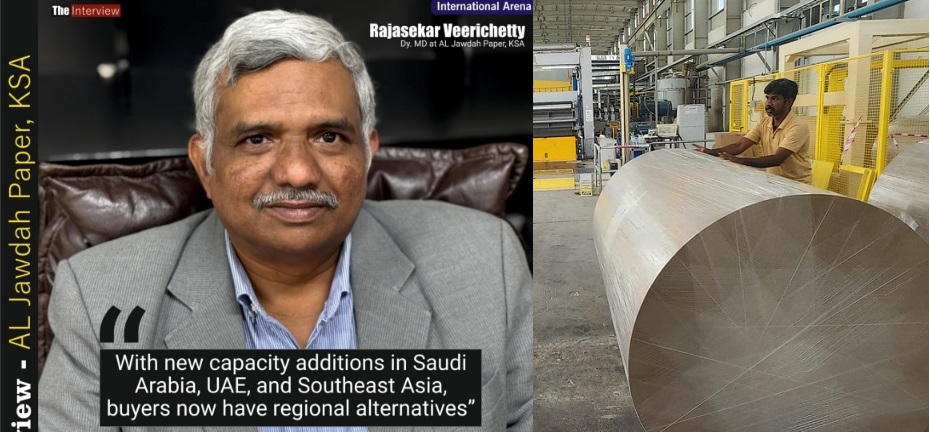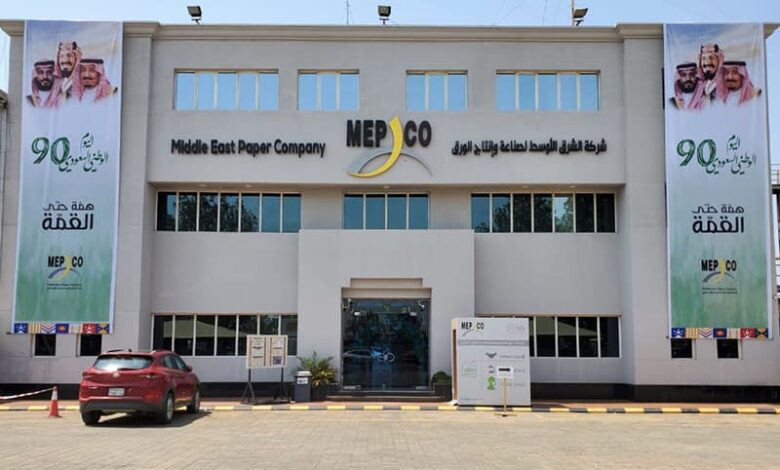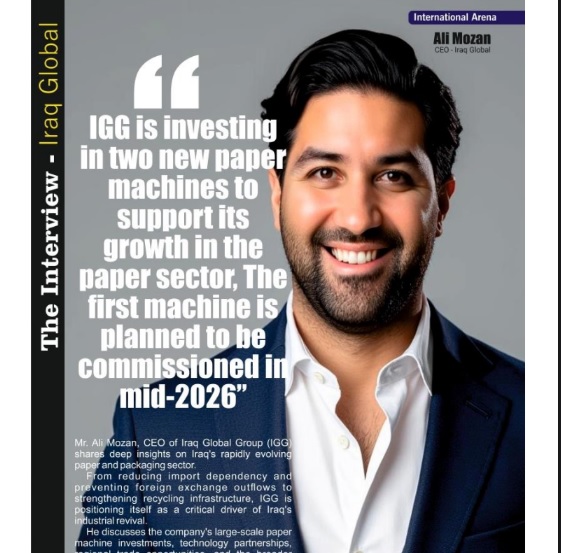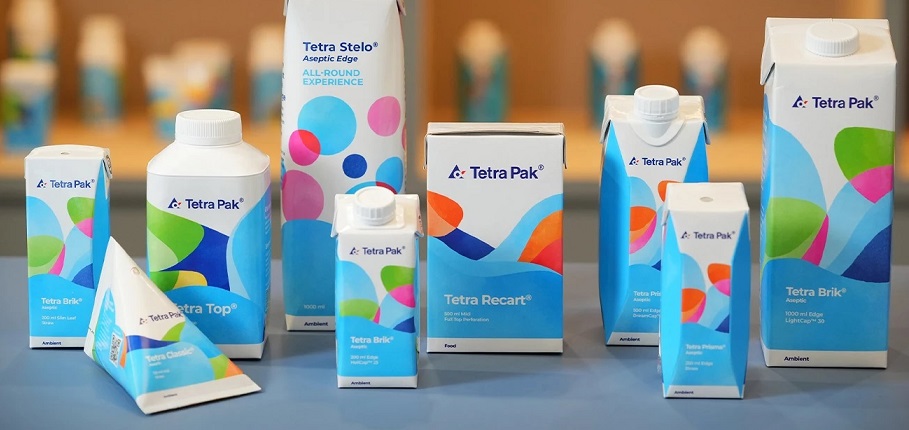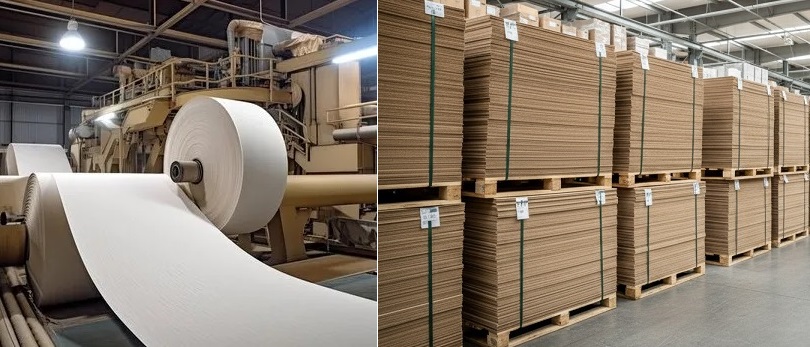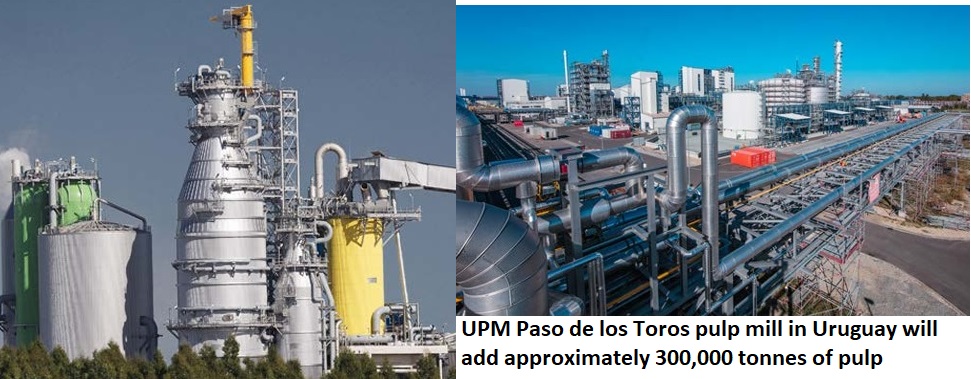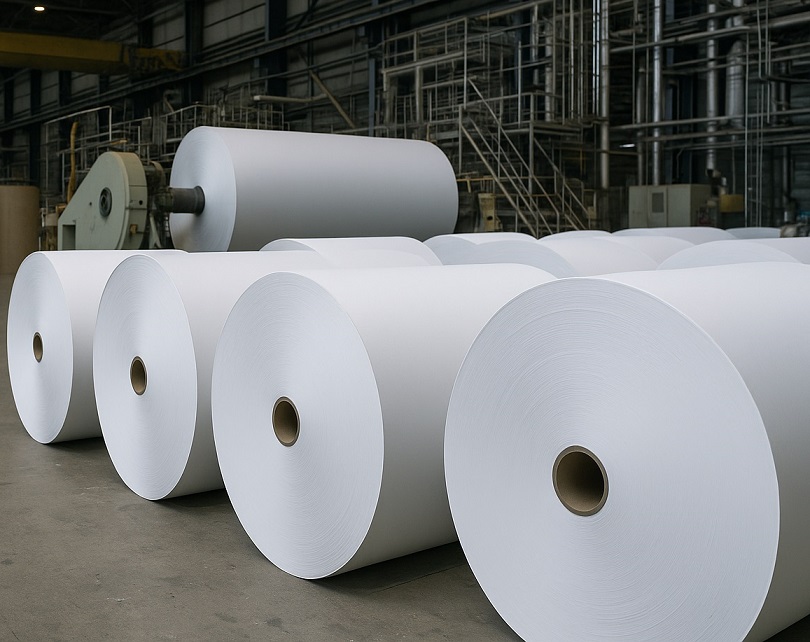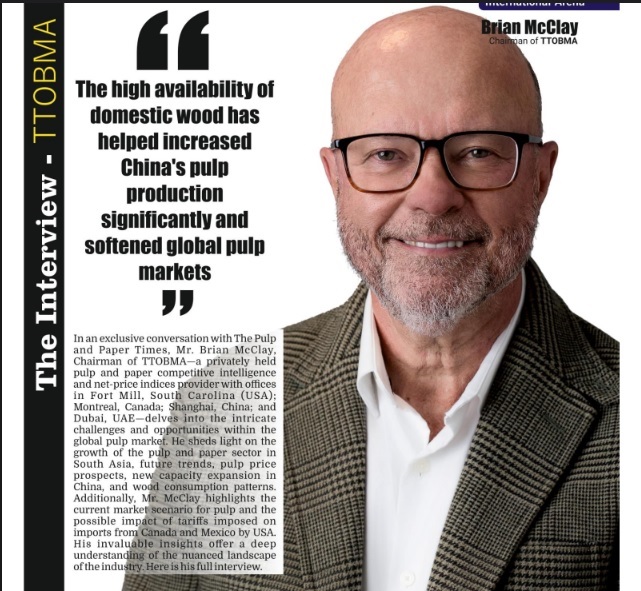In my view, all GCC nations should ban RCP exports due to a demand of 2.5 million MT of fiber, which isn't available in the local market, says Mr. Atul Kaul, CCO of WARAQ
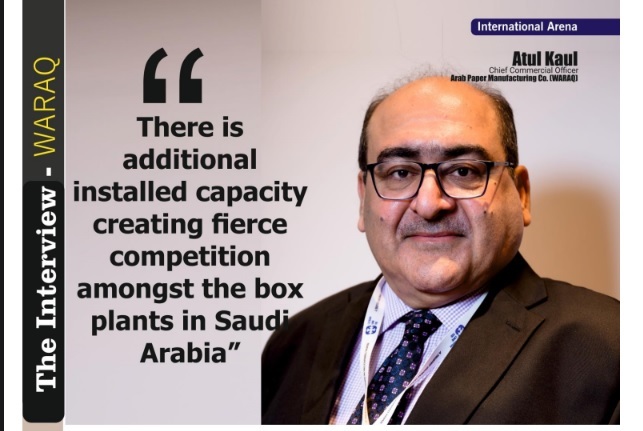
There has been a marked reduction in export volumes from India, as they are unable to match both the quality and price paradigm, Says Mr Atul Kaul
"Everybody must learn to source more locally and modify the furnish to possibly accept a lower grade"
In an exclusive interview with The Pulp and Paper Times, Mr. Atul Kaul, Chief Commercial Officer of Arab Paper Manufacturing Co. (WARAQ), discusses a range of topics, including demand and pricing, the current state of the paper industry, the waste paper crisis, and exports from India. He also delves into the corrugated packaging paper market in the GCC countries and other significant issues. Here is the complete interview.
The Pulp and Paper Times:
Q: Please give a brief introduction of Arab Paper Manufacturing Co. (WARAQ)
Way back in 1994, there was no Kraft paper mill in the Kingdom of Saudi Arabia, and all recovered fiber was either sent to landfills or exported out of the Kingdom. Identifying this opportunity, “Arab Paper Manufacturing Co.” or WARAQ came into existence, promoted by a group of like-minded professionals. Today, WARAQ represents one of the largest installed capacities of corrugated case materials, but also specialty grades of Kraft papers for various applications beyond corrugated packaging.
Strategically located on global trade routes, we serve a varied customer base from the Far East to the Americas, as well as major destinations in Africa, Southeast Asia, Europe, and more. Today, WARAQ is a key contributor to Saudi Arabia’s transformation towards a thriving circular economy as part of Vision 2030.
Q: Corona Pandemic has dynamically changed the paper industry, causing a shortage of waste paper, price up and down of finished Paper, i.e. kraft & fluting, and upward logistic and inputs costs. How do you evaluate a paper manufacturer's current situation (Pre-covid and Post-Covid)?
The COVID-19 pandemic did not only impact the pulp and paper industry, but it has also impacted the way we live and will continue to live for times to come. Every now and then, there is a scare about a new version of the virus and associated threats. I personally feel we have not seen the worst of it, and we must always be alert to this fact. Life as we know it “pre-COVID” will never be the same “post-COVID.”
Indeed, there was an acute shortage of recovered fiber, as I do not refer to the grade as wastepaper. We recover and reuse it, so how can it be called waste? Recovered fiber, or RCP, does not have a direct causal impact on finished paper pricing, as that is affected by the demand and supply curves existing at any given period. However, specifically during the COVID-19 pandemic, there was a complete shutdown and quarantine, which drastically reduced the actual collection of RCP grades, thus flaring up the prices. In addition, logistical challenges also played a pivotal role in price escalation. Shipping lines made record profits during that period. Prices, to my knowledge, were never down but almost reached an all-time high during that period, culminating in record highs of 2022.
Q: Year 2023 presented a challenging business environment for paper mills reporting that demand remains down for their paper packaging, cutting into profits and leading them to reduce some production. Don’t you think that the current business environment may prove challenging for a paper mill especially when demand is on the lower side.
This is a complex question, and the entire interview could be consumed in answering it. However, to maintain perspective, I would not concur with the notion that the demand remains low simply because it is low. We need to know why. Post-COVID, the supply chain was still struggling, and delays in material arrival and uncertainty forced customers to shore up their inventory in 2021. As a result, in 2022, many customers were stuck with overstock, and I speak broadly from a global perspective. This led to lesser demand in 2023, and mills were under strain to dispose of their tonnage, which ultimately affected both demand and prices. With everyone stocking up to record high levels at record high prices, it was inevitable for the market to flip around, resulting in very low sales and prices. During this period, recovered fiber also struggled to maintain momentum.
Q: How has the wrapping and corrugated packaging paper market in the GCC Countries performed in volume and value terms for the last five years?
The GCC is still a nascent economy with growth in every sector. With the circular economy being the talk of the town and a focus on non-oil sector investment, as well as the banning of single-use plastic bags, the paper and packaging market has huge potential. To briefly address the subject, let me ask: which demand are we talking about? First, we must mention the demand for corrugated packaging; only then can we make any coherent comment on the demand for linerboard. Today, in the Kingdom, we have 1.5 million MT of installed capacity for corrugated packaging and an active demand of just short of 1 million MT, creating fierce competition among the box plants.
Q: Please explain the product portfolio (Product Mix) of WARAQ, GSM, BF and Capacity. Also, share your expansion plan in future with the expected date of start up of the machine along with end use.
WARAQ principally produces high-quality recycled containerboard or corrugated case materials but also produces premium grades such as semi-kraft liners, both brown and white. Additionally, alternate streams are also served, such as HPL base paper, bag kraft, and unbleached coreboard.
In the premium grades like white top semi-kraft and brown top semi-kraft, our unique formulation uses a combination of 100% virgin fibers—both bleached hardwood and bleached softwood—as well as UKP to comprise the top layer over a recycled bottom layer. This delivers excellent strength and surface finish for high-grade printability suited to modern-day printing challenges, from flexo to preprint to digital printing.
We regularly produce high-performance fluting and test liners from 70 to 300 GSM, with a special grade called wet strength fluting, which is used in the manufacture of products for challenging high-humidity environments like fruits, flowers, and vegetables. Our three machines match our well-articulated specifications, which are the best in the industry, second to none in equivalent grades.
Q: The government of the United Arab Emirates imposed an export ban on waste paper through customs notice 07/2022. The ban is temporary but extended to March 23. What purpose do you gauge behind this move being a GCC member country? How will it benefit the local industry?
In my firm belief, the resources of any country belong to that country first, and only if there is a surplus should they be exported. Free exports of RCP have damaged most of the mills involved in paper recycling. When there is an established shortfall in supply versus demand, how could we concur with exporting RCP out of the GCC? Indeed, there was a ban on OCC, which has now converted to a deterrent duty. In my view, all GCC nations should ban the export of RCP. We speak about a demand of 2.5 million MT of fiber, and it simply does not exist in the local market. Today, we are forced to import fiber from other locations to supplement our needs, and there is fierce competition for every single ton of fiber we secure.
Q: Recently, Excess Capacity and a drop in Exports have made the paper market sluggish in India. Do you also feel the same heat in Saudi Arabia or in GCC countries? How do you take this excess capacity issue?
I would not comment on the Indian market except to say that the aggressive expansions were not carefully studied and were largely based on exports as a mitigation theory. COVID-19 upset the short-term plans, and additionally, the market slowdown affected them locally. With fiber touching the current levels, if the mills continue to export at low prices, they will severely lose, thus the slowdown in exports. There are several reasons behind this: the marked slowdown in China, and China itself becoming an exporter of kraft paper, has upset the paradigm.
The GCC, too, though not fully realizing its potential capacity-wise, would also see issues with markets and fiber challenges. However, currently, the market is in full swing, and demand is high. The repeated seismic behavior of trade cycles makes customers maintain lean inventories and source closer to home. Additionally, the impact of escalating freight rates and unpredictable delays in material arrival keeps us in a better position.
Q: Good and right quality of kraft and duplex paper is a major issue and hurdle in exporting to other countries. Smell, cracks, and spots in the paper have broken the buyers’ trust. How could WARAQ overcome these problems?
I am a very proud Indian, and this question breaks my heart. All I have learned in the industry is from my early days spent in the Indian paper industry, my alma mater. It is professionally uncomfortable for me to address this point, though true, and the mind ponders why such things are happening. We have the most dynamic workforce and learning institutions; our papermakers are second to none in the world. There is no dearth of knowledge, yet this comes up for discussion. Let us say shortcuts are never good, and promoters must invest in state-of-the-art equipment. That is all that is required to produce a world-class product.
At WARAQ, from day one, we decided that we would produce the best quality paper that is scientifically and technically possible. We heavily invested in equipment, be it mill labs or water treatment. Papermaking has become a bespoke art, involving everything from raw material selection, papermaking, quality scanners, to labs and water treatment. We never take a chance when it comes to achieving perfection. Our customers of three decades are assured that they will receive the same product they order each and every time, all through the year. We ensure that there is no variation in the product presentation.
Q: How would you analyze waste paper procurement amid the surging packaging paper capacity in various countries?
I have already addressed this question earlier and have spoken about this subject at global paper and recycling conferences. The new challenge facing kraft paper mills is sourcing good and plentiful fiber. With more and more capacities coming online, especially in net export markets like North America, where we see a surge in the production of recycled containerboard, less material will be available for exports. This impact on availability will also affect price. Everyone must learn to source more locally and modify the furnish to possibly accept a lower grade.
Q: India was a big exporter of kraft and packaging paper to GCC countries and China; now, the massive capacities in packaging paper have come up in Southeast Asia and GCC, which has turned market sentiments. Do you think that the import of paper from India will remain low in the future, or is it a temporary phase?
I would not entirely agree with that. We must define what is "big." Traditionally, the main players in the Middle East markets were Asian and European mills. China, as a market for very limited grades and GSMs, came and went when manufacturing moved out of China to some extent. That demand flared a few years ago when China put a ban on imported waste paper that did not meet their specifications. India did export quantities to the GCC and indeed still does in a limited way, but what has been observed is a marked reduction in export volumes out of India as they cannot match the quality and price paradigm together. I don’t think with the current capacities existing and those coming online in 2024-25, India would be able to export many quantities to this part of the world as they have to compete with the European and Asian producers, not to mention the local mills. There is a lot of capacity that has come online in the Greater Middle East, which also needs to be considered (Iran, Egypt, Turkey, to name a few).
Q: Any message you want to give to Indian buyers of paper?
Long before the circular economy became a keyword in business parlance, our founders envisioned a dream where not only recycling would represent the essence of business but also be the core activity. Business is all about circularity, and thus paper or any other commodity will follow international demand and supply curves. Mature thoughts and a well-articulated business plan are a must before any investment in this sector, which is capital intensive. Always remember that there is no low-hanging fruit, and one must steer away from the red ocean if the business plans are to remain profitable. Finally, the quality of both product and service should never be compromised.
Web Title: In my view, all GCC nations should ban RCP exports due to a demand of 2.5 million MT of fiber, which isn't available in the local market, says Mr. Atul Kaul, CCO of WARAQ





 Join WhatsApp Group
Join WhatsApp Group Join Telegram Channel
Join Telegram Channel Join YouTube Channel
Join YouTube Channel Join Job Channel (View | Submit Jobs)
Join Job Channel (View | Submit Jobs) Join Buy Sell Channel (Free to Submit)
Join Buy Sell Channel (Free to Submit) Paper News Headlines Channel (Free to read)
Paper News Headlines Channel (Free to read)





